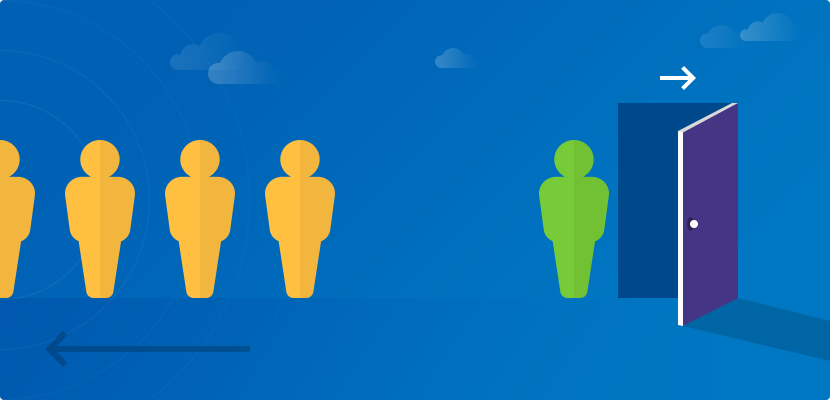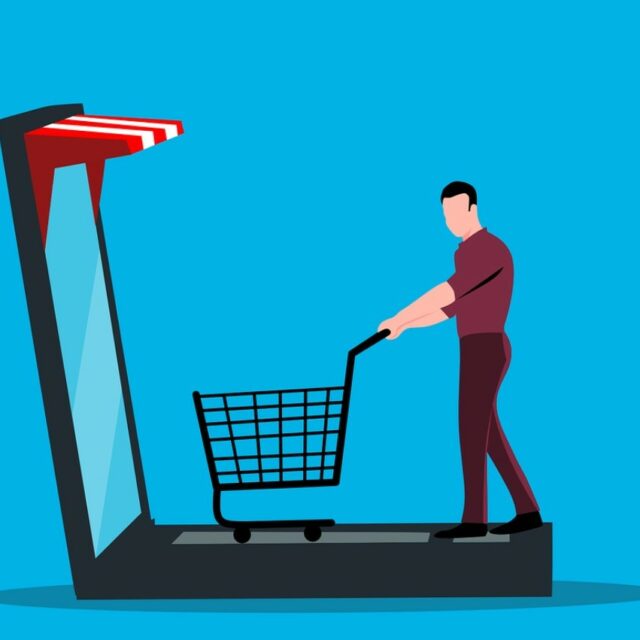Welcome to this comprehensive guide on preventing and mitigating customer churn. In this section, we will delve into the concept of customer churn, its significance in business, and why it should be a top priority for any company.
Definition and Explanation of Customer Churn: Customer churn is more than just customers leaving your business or discontinuing the use of your products or services. It’s a critical metric that directly impacts your revenue and growth potential. When customers churn, not only do you lose their current contributions to your bottom line, but you also miss out on future sales opportunities.
Click here for our guide about customer churn!
Importance of Customer Churn in Business: Understanding the intricacies of customer churn is paramount if you want to thrive in today’s cutthroat market. Let’s explore some compelling reasons why preventing customer churn should be at the forefront of your strategic initiatives:
- Revenue Impact: High customer churn can deal a significant blow to your financial stability by reducing recurring revenue streams. By focusing on reducing churn rates, you can bolster your profitability and ensure long-term success.
- Cost Efficiency: Acquiring new customers often comes with hefty marketing expenses compared to retaining existing ones. By implementing effective strategies to prevent customer attrition, you can save valuable resources that would otherwise be spent on acquiring new clientele.
- Brand Reputation: A high rate of customer defection may signal underlying issues with product quality, service delivery, or overall customer experience. This negative perception not only tarnishes your brand reputation but also makes it arduous to attract new customers who are crucial for sustained growth.
- Growth Potential: Reducing customer churn allows you to shift focus from constantly replacing lost customers towards expanding an army of loyal patrons who become advocates for your brand over time. These devoted supporters tend to spend more money with you and actively promote positive word-of-mouth referrals – fueling organic growth like never before.
By gaining deep insights into what triggers customer churn and implementing the most effective strategies to prevent and mitigate it, you can conquer the challenges of an increasingly competitive landscape. Don’t settle for anything less than the best – let us guide you toward a future where customer retention is more than just a buzzword; it’s a way of life.
Identifying the Causes of Customer Churn
Understanding why customers leave is essential for businesses to effectively prevent and mitigate churn. By identifying the underlying causes, companies can implement proactive measures to retain their valuable clientele.
- Common factors that contribute to customer churn:
- Exceptional customer service: Customers expect prompt and helpful assistance when they encounter issues or have questions. Failing to meet these expectations can lead to frustration and ultimately result in churn.
- Product dissatisfaction: When customers are not satisfied with a product or service, they are more likely to explore alternatives offered by competitors.
- Price sensitivity: Customers may be enticed by better pricing options available elsewhere, leading them to switch providers.
- Evolving needs or circumstances: As individuals’ requirements change over time, their loyalty toward certain products or services may diminish.
- Competitor offerings: The emergence of new competitors with superior offerings can lure existing customers away from your business.
- How to spot early signs of potential churn:
- Monitor usage patterns closely: Keep track of how frequently your customers engage with your product or service. A sudden decrease in usage could indicate dissatisfaction or an intention to discontinue using your offering.
- Analyze feedback and complaints diligently: Pay attention to both positive and negative customer feedback. Addressing complaints promptly is crucial as they often play a significant role in contributing to churn.
- Conduct surveys and interviews regularly: Gather insights directly from your customers through surveys or interviews on a regular basis. This will help you understand their evolving needs and identify areas where improvements are needed.
Identifying the root causes of customer churn requires careful analysis and a deep understanding of customer behavior patterns. By recognizing common reasons for attrition and remaining vigilant about monitoring early warning signs, businesses can proactively address these issues before losing valuable clientele.

Strategies to Prevent Customer Churn
As seasoned professionals in the field of customer churn prevention, we know firsthand the significance of cultivating strong customer relationships and delivering exceptional service. By implementing effective strategies, you can significantly reduce churn rates and propel your business toward success. In this section, I will share expert tips on how to prevent customer churn.
- Building Unbreakable Customer Relationships:
- Personalize every interaction: Take the time to truly understand your customers’ needs and preferences. Tailor your communication and offerings accordingly for an unforgettable experience.
- Provide unparalleled support: Be responsive, empathetic, and proactive when addressing any concerns or issues raised by your valued customers.
- Foster a vibrant community spirit: Encourage engagement among your customers through interactive forums, lively social media groups, or exclusive events that make them feel like part of something special.
- Delivering Excellence in Customer Service:
- Empower your support team: Ensure that your support team is equipped with extensive product knowledge and armed with the necessary tools to provide swift assistance whenever needed.
- Streamline communication channels: Offer multiple avenues for customers to reach out, such as phone lines, email correspondence, or live chat options, while ensuring seamless integration between them all.
- Monitor response times closely: Strive for lightning-fast response times when it comes to addressing inquiries or resolving complaints from valuable customers.
- Implementing Irresistible Customer Loyalty Programs:
- Reward loyalty generously: Entice loyal customers with enticing incentives like exclusive discounts, early access to new features/products/services they’ll love, or loyalty points that can be redeemed for future purchases.
- Create tiers based on engagement levels: Segment your esteemed clientele into different tiers based on their level of involvement with your brand. As they ascend higher up the ladder, offer additional perks that keep them engaged.
Remember that each business possesses its own unique qualities; therefore, it’s crucial to tailor these strategies according to your specific industry and target audience. Regularly analyze data pertaining to customer behavior patterns and diligently review feedback obtained from surveys or reviews—this invaluable information will help you identify areas where improvements are needed. By effectively implementing these expert strategies within your organization, not only will you witness a remarkable reduction in churn rates, but you’ll also foster unwavering customer loyalty and advocacy.
Stay tuned for the next section, where we delve into how to mitigate the impact of customer churn through a robust recovery strategy.
Mitigating the Impact of Customer Churn
Preventing customer churn is essential for businesses looking to maintain a strong customer base and achieve long-term success. By implementing effective strategies, companies can minimize the negative impact of churn and retain valuable customers. In this section, we will explore key approaches that experts recommend for preventing and mitigating customer churn.
- Developing a Proactive Customer Recovery Strategy: When customers show signs of leaving or have already churned, it’s crucial to have a well-designed plan in place to win them back. A proactive customer recovery strategy involves reaching out to these customers, understanding their concerns, and offering personalized solutions that address their specific needs. This approach demonstrates your commitment to resolving issues promptly and rebuilding trust with your valued customers.
- Harnessing the Power of Customer Feedback: To effectively prevent churn, businesses must actively seek feedback from their customers. By attentively listening to their suggestions or complaints and taking action based on real-time insights directly from those who matter most – your customers – you can continuously improve your products or services. Regularly collecting feedback through surveys or other channels allows you to identify areas for improvement before they become reasons for churn.
- Leveraging Data Analytics for Predictive Insights: Data analytics plays a vital role in predicting potential churn by identifying patterns among existing customers who are at risk of leaving. By analyzing various data points such as usage behavior, purchase history, support interactions, etc., businesses can develop predictive models that highlight which customers are likely to churn in the future. Once identified, targeted retention efforts can be implemented for these high-risk individuals using personalized offers or incentives tailored specifically toward addressing their pain points or concerns.
- Implementing Effective Retention Programs: Retention programs are highly effective in significantly reducing customer attrition rates. These programs aim at rewarding loyal customers with exclusive benefits such as discounts on future purchases or access to premium features/services not available otherwise – all designed to foster a sense of value and loyalty. By offering incentives that align with customers’ needs and preferences, you can create a strong bond between them and your brand, making it less likely for them to consider switching to competitors.
In summary, preventing and mitigating customer churn requires a proactive approach. By developing a customer recovery strategy, actively seeking feedback from customers, leveraging data analytics for predictive insights, and implementing effective retention programs, businesses can effectively reduce churn rates and retain valuable customers. Remember that each step should be tailored to fit your specific industry or business model for optimal results. With these strategies in place, you’ll be well-equipped to conquer the challenge of customer churn while ensuring long-term success for your company.

Case Study: Successful Churn Prevention and Mitigation
In this section, we will delve into real-life examples of businesses that have conquered customer churn with their effective prevention and mitigation strategies. By examining these case studies, you’ll gain valuable insights and learn from the experiences of industry leaders.
- Terago Communications Inc., a trailblazer in enterprise networking solutions, implemented powerful tactics to reduce customer churn. They prioritized enhancing their customer service by providing personalized support and addressing any issues promptly. Moreover, Terago Communications Inc. developed an all-encompassing loyalty program that rewarded customers for their unwavering business commitment. This program offered exclusive discounts, access to premium features, and dedicated account managers. By fostering strong relationships with their customers through exceptional service, Terago Communications Inc. achieved remarkable results in reducing churn rates while boosting customer retention.
Key Takeaway: Building robust relationships through personalized support and implementing a comprehensive loyalty program can be highly effective in reducing churn rates. - A leading SaaS company specializing in project management software for small businesses. They faced the challenge of high churn rates due to fierce competition within the market. To combat this issue head-on, the company conducted extensive data analysis to identify patterns among customers who were at risk of churning. Leveraging advanced predictive analytics techniques allowed them to proactively reach out to these customers with targeted offers or incentives tailored specifically to address their concerns or needs. Furthermore, the company actively sought feedback from existing customers through surveys and interviews. This invaluable input enabled them to continuously improve their product based on user suggestions and preferences. As a result of these efforts, they successfully reduced customer churn by enhancing the overall user experience while meeting the evolving needs of its target audience effectively.
Key Takeaway: Utilizing data analytics for predicting potential churners combined with proactive outreach efforts based on individualized offers can significantly mitigate the impact of customer attrition. - A well-established brick-and-mortar retailer faced increasing competition from online retailers. To combat customer churn, they implemented a multi-channel approach to engage with their customers effectively. The store focused on creating an omnichannel experience by seamlessly integrating its physical stores with an online presence. They offered seamless shopping experiences across various platforms and provided incentives for customers to visit their physical stores through exclusive in-store promotions or events. Additionally, they leveraged social media platforms to connect with their customers and build brand loyalty. By actively engaging with their audience through interactive content and personalized messaging, they were able to foster stronger relationships and reduce churn rates significantly.
Key Takeaway: Embracing an omnichannel approach that integrates both offline and online channels can help businesses stay competitive while retaining customers in today’s digital landscape.
These case studies underscore the importance of implementing effective strategies to prevent and mitigate customer churn. By focusing on building strong relationships, offering excellent customer service, leveraging data analytics for predictive insights, and continuously improving based on feedback received from your valued clientele, you can substantially reduce churn rates while enhancing overall customer retention.
Implementing Churn Prevention and Mitigation Strategies in Your Business
To ensure the long-term prosperity of your business, it is absolutely essential to implement effective churn prevention and mitigation strategies. By proactively taking steps to retain customers, you can significantly reduce customer churn rate and cultivate unwavering customer loyalty. Here are some expert tips on how to successfully implement these strategies:
- Gain In-Depth Customer Insights: Begin by gaining a profound understanding of your target audience. Conduct thorough market research, perform meticulous customer data analysis, and actively seek feedback to identify their needs, preferences, and pain points.
- Craft an All-Encompassing Churn Prevention Plan: Develop a comprehensive plan that outlines specific actions you will take to prevent customer churn. This plan should include well-defined goals, realistic timelines, and measurable metrics for gauging success.
- Forge Indomitable Customer Relationships: Focus on building unbreakable bonds with your customers right from the moment they interact with your brand. Provide personalized experiences tailored to their unique requirements, offer exceptional customer service at every touchpoint, and maintain regular communication through various channels.
- Incentivize Loyalty: Implement enticing customer loyalty programs that reward repeat purchases or referrals. These incentives serve as powerful motivators for customers to remain engaged with your brand while dissuading them from switching over to competitors.
- Improve Continuously Based on Feedback: Actively solicit feedback from your valued customers through surveys or other means of communication. Utilize this invaluable input to make necessary enhancements to your products or services so that they better align with their evolving needs.
- Utilize Data Analytics for Predictive Analysis: Harness the power of advanced data analytics tools to scrutinize patterns in customer behavior meticulously; this enables you to swiftly identify potential signs of churn before they escalate further. By accurately predicting which customers are most likely at risk of churning, you can take proactive measures to retain their loyalty.
- Monitor the Success of Your Endeavors: Regularly monitor key performance indicators (KPIs) such as retention rate, average revenue per user (ARPU), or Net Promoter Score (NPS) to evaluate the effectiveness of your churn prevention strategies over time.
Remember that implementing these strategies necessitates unwavering commitment and dedication. It is crucial to consistently review and adapt your approach based on the ever-evolving needs of your customers. By diligently applying these proven strategies, you can significantly reduce customer churn, foster long-term loyalty, and ultimately propel the growth and triumph of your business.





